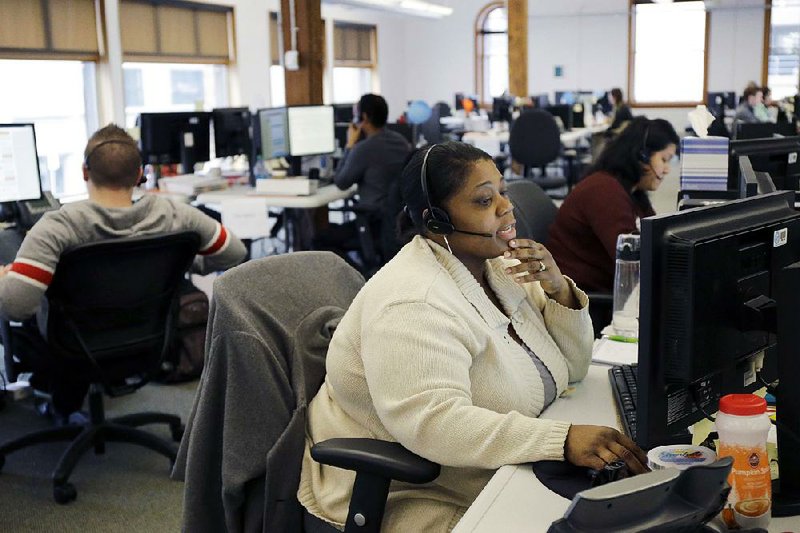WASHINGTON -- State-run health insurance markets that offer coverage under President Barack Obama's health law are struggling with high costs and disappointing enrollment. These challenges have led a few of them to turn over operations to the federal government or join forces with other states.
Hawaii's marketplace, the latest to do so, was awarded $205 million in federal startup grants. It has spent about $139 million and enrolled 8,200 customers for individual coverage in 2015. Unable to sustain itself, the state marketplace is turning over sign-ups to the federal marketplace, healthcare.gov, for 2016.
Twelve states and the District of Columbia fully control their markets. Experts estimate that about half face financial difficulties. Federal taxpayers gave nearly $5 billion in startup grants to the states, expecting that state markets would become self-sustaining. Most of the federal money has been spent, and states have to face the consequences.
"The viability of state health insurance exchanges has been a challenge across the country, particularly in small states, due to insufficient numbers of uninsured residents," said a statement from the office of Hawaii Gov. David Ige, a Democrat, announcing last month that his state's sign-ups were being turned over to the federal government.
States are "talking a lot about shared services," said Peter Lee, who heads California's state-run marketplace. "It's how you get economies of scale."
Covered California fell short of its sign-up projections this year by nearly 20 percent, but Lee said it remains "a solid business proposition."
States could pool resources on functions such as labor-intensive call centers or use healthcare.gov's technology for online enrollment. They generally want to keep control over marketing, consumer education and oversight of insurance plans.
Sustainability is the focus of the administration's annual meeting with state exchange directors, scheduled for the end of the month in the Washington area. The two-day meeting is closed to the media.
"Each state has a different set of circumstances that informs their approach, and we will continue to support their efforts," said Mayra Alvarez, the federal liaison to state marketplaces.
The pendulum probably will swing toward a greater federal role in the next couple of years, said Jim Wadleigh, director of Connecticut's Access Health. Eventually, more states will want to take the lead, he said, because it gives them greater control over health care, particularly modernizing Medicaid programs for low-income people.
In New England, there's talk of a regional exchange.
Hawaii is the third state exchange going to the federal sign-up system, following Nevada and Oregon, which made the switch last year. Among the problems confronting states:
• Minnesota's MNsure faces a murky financial future. Its budget is balanced as a result of repeated cuts when enrollment came in below projections, a tactic that cannot work forever. Despite a slew of proposals, no concrete changes came out of the state's most recent legislative session. Democratic Gov. Mark Dayton has signaled that MNsure's fate is on the table, including the option of shifting operations to healthcare.gov.
• The U.S. attorney in Boston has subpoenaed records dealing with the troubled rollout of the Massachusetts Health Connector, dating to 2010.
• Colorado officials are considering big changes to that state's marketplace, from pooling call centers with other states to dismantling the exchange and relying on healthcare.gov instead. Although the market is on solid financial footing, it has fallen short of best-case enrollment goals.
• A federal audit concluded that Maryland used exchange establishment grants from Washington to pay for $28.4 million in costs that should have been allocated to the state's Medicaid program. State officials dispute that, but federal officials say Maryland should pay the money back. Separately, the original lead contractor for the state website has agreed to repay $45 million to avoid legal action over rollout problems last year.
• In Vermont, a debate has been raging about whether to abandon the state exchange. Democratic Gov. Peter Shumlin originally wanted a single state-run system for all residents, along the lines of Canada. Shumlin backed off because it would have meant prohibitively high taxes. He wants to fix the state exchange, still grappling with technology problems that plagued it from its start.
Information for this article was contributed by Cathy Bussewitz, Kyle Potter, Steve LeBlanc, Kristen Wyatt, Brian Witte, Dave Gram and Judy Lin of The Associated Press.
A Section on 07/27/2015
